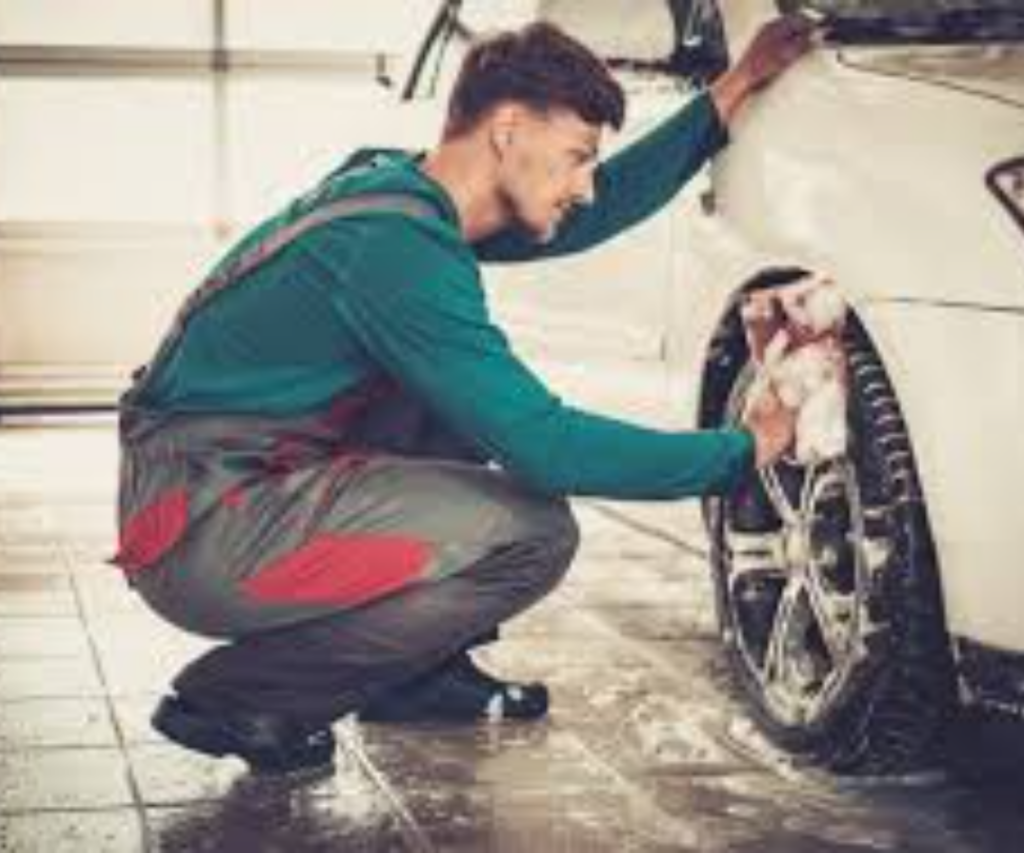Washing your car at home can be a fulfilling way to save money and take pride in your vehicle’s appearance. However, without the proper techniques and care, you risk causing more harm than good. Many car owners unknowingly make mistakes that can damage their car’s paint, leave streaks, or reduce its overall lifespan. For those looking to achieve a professional-level clean without the hassle, turning to the best car wash company in California can be a smart alternative. If you prefer to wash at home, here are the top mistakes to avoid to protect your vehicle’s finish and shine.
Using Dish Soap or Household Cleaners
One of the most common mistakes people make is using dish soap or other household cleaners to wash their car. While these products are excellent at cutting through grease and grime on dishes, they are far too harsh for automotive paint. Dish soap can strip away the protective wax layer, leaving your car’s paint vulnerable to scratches, fading, and oxidation.
Instead, always use a car-specific shampoo or wash soap. These products are designed to clean your car effectively without harming the paint or clear coat. They also help maintain the glossy finish that keeps your car looking new.
Washing in Direct Sunlight
While washing your car in bright sunlight may seem convenient, it can cause significant problems. The sun accelerates the drying of water and soap, leading to water spots and streaks. Over time, these spots can etch into the paint, making them difficult to remove.
To prevent this, choose a shaded area or wash your car during the cooler parts of the day, such as early morning or late evening. If avoiding sunlight isn’t possible, consider using a car wash solution with water-spot resistance to minimize streaking.
Skipping the Pre-Rinse Step
Diving straight into scrubbing without rinsing your car first is a recipe for scratches. Dirt and debris on the surface act like sandpaper when rubbed against the paint, causing swirl marks and damage.
To avoid this, start your car wash with a thorough pre-rinse using a hose or pressure washer. This step removes loose dirt and makes the washing process safer and more effective.
Using a Single Bucket for Washing and Rinsing
Using just one bucket for your car wash is another common mistake. When you rinse your wash mitt in the same bucket, you reintroduce dirt and debris, which can end up back on your car and scratch the paint.
The two-bucket method is a simple and effective solution. Use one bucket for soapy water and another for rinsing your wash mitt. This method ensures that your wash mitt stays clean throughout the process and reduces the risk of scratches.
Cleaning Wheels and Tires Last
The wheels and tires are often the dirtiest parts of a car, coated with brake dust, road grime, and grease. Washing them last can result in dirt splashing back onto the freshly cleaned body, undoing your work.
Always start with the wheels and tires. Use a dedicated wheel cleaner and brush to tackle the grime, then rinse thoroughly before moving on to the rest of the car.
Using High-Pressure Water Incorrectly
Pressure washers can be a fantastic tool for car washing, but using them improperly can cause more harm than good. Spraying too close to the car or using excessive pressure can damage the paint, strip wax, or even dent delicate areas.
When using a pressure washer, maintain a safe distance of 12–18 inches from the surface and use a gentle spray setting. Test on a small area first to ensure the pressure is appropriate.
Forgetting to Rinse Thoroughly
Even if you’ve washed your car carefully, skipping a final rinse can leave soap residue behind. This residue dries into streaks and spots, detracting from your car’s appearance and potentially harming the paint.
Make sure to rinse your car thoroughly after washing. Use a steady stream of water to remove all soap and suds, paying attention to crevices and hard-to-reach areas.
Using the Wrong Drying Materials
Air-drying your car or using the wrong materials, such as a bath towel or paper towels, can lead to scratches, swirl marks, and water spots.
Instead, use a clean, soft microfiber drying towel or a chamois. Microfiber is gentle on the paint and highly absorbent, making it an excellent choice for drying. If possible, use a leaf blower or car dryer to remove excess water without touching the surface.
Ignoring Hard-to-Reach Areas
Many people overlook areas like under the wheel wells, inside door jambs, and behind bumpers. Dirt and grime accumulate in these spots, leading to rust and corrosion if left unchecked.
Be thorough when washing your car. Use a small detailing brush or a narrow spray nozzle to clean tight spaces. Addressing these hidden areas helps maintain your car’s overall condition.
Overusing or Underusing Soap
Using too much soap can leave behind sticky residue, while using too little reduces cleaning effectiveness. Both scenarios can result in a subpar wash.
Always follow the manufacturer’s instructions for the correct soap-to-water ratio. This ensures the solution is strong enough to clean but easy to rinse off completely.
Neglecting to Wax After Washing
Washing your car removes dirt and grime but doesn’t offer long-term protection. Without a protective layer, your car’s paint is exposed to UV rays, bird droppings, and environmental contaminants.
After washing, apply a wax or sealant to your car. Waxing not only enhances shine but also creates a barrier that shields the paint from damage. Modern spray waxes are quick to apply and make this step easy.
Failing to Change Dirty Wash Water
Using dirty wash water to clean your car defeats the purpose of washing it. As you clean, the water becomes contaminated with dirt, which can scratch your car’s surface.
To avoid this, change your wash water frequently, especially when dealing with a particularly dirty car. Clean water ensures better results and prevents damage.
Conclusion
Washing your car at home is a cost-effective and satisfying way to keep it looking its best, but it requires attention to detail and proper technique. By avoiding these common mistakes, you can ensure your car remains clean, shiny, and well-protected. For even more protection and long-term care, learn the benefits of full detail car washes in combating rust and preserving your vehicle’s finish. Invest in the right tools and products, and take the time to wash your car with care. With the right approach, you’ll achieve a professional-level finish every time, all from the comfort of your driveway.





